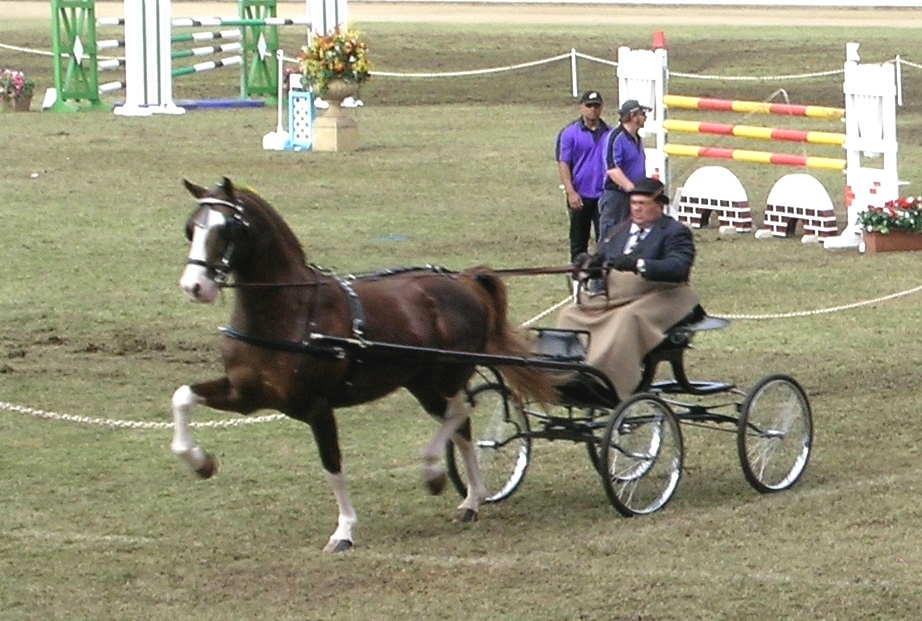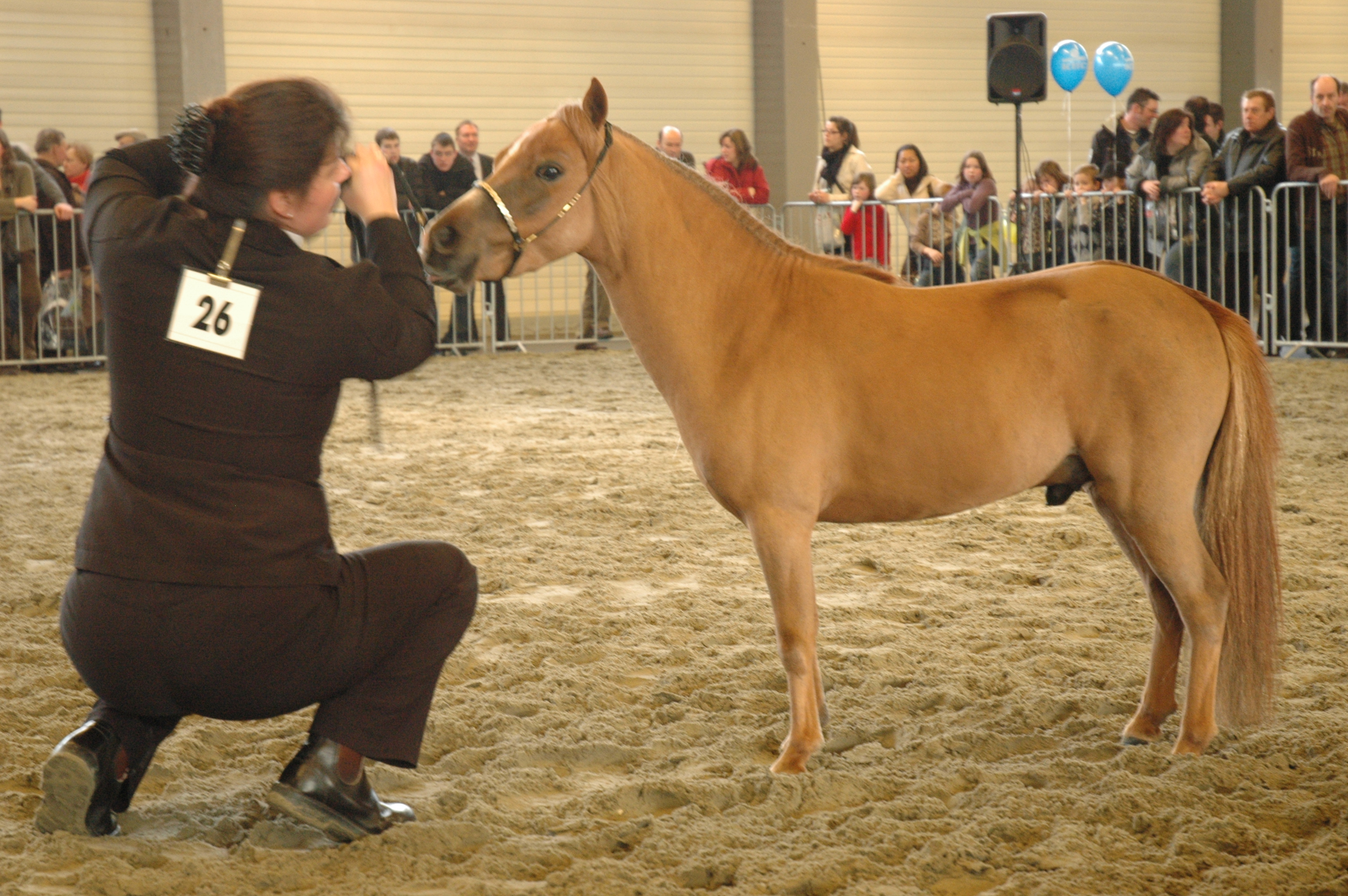|
Sabino Horse
A sabino horse with extensive roaning Sabino describes a distinct pattern of white spotting in horses. In general, Sabino patterning is visually recognized by roaning or irregular edges of white markings, belly spots, white extending past the eyes or onto the chin, white above the knees or hocks, and "splash" or "lacy" marks anywhere on the body. Some sabinos have patches of roan patterning on part of the body, especially the barrel and flanks. Some sabinos may have a dark leg or two, but many have four white legs. Sabino patterns may range from slightly bold face or leg white markings—as little as white on the chin or lower lip—to horses that are fully white. The known causes of the sabino patterns are the SB-1 allele and several other dominant white (W) alleles on the ''KIT'' gene. The genetics behind some types of sabino, such as that found in Clydesdales, have not yet been identified. Some genes, such as Sabino-1, are incomplete dominants, producing irregular spot ... [...More Info...] [...Related Items...] OR: [Wikipedia] [Google] [Baidu] |
Breed Registry
A breed registry, also known as a herdbook, studbook or register, in animal husbandry and the hobby of animal fancy, is an official list of animals within a specific breed whose parents are known. Animals are usually registered by their breeders while they are young. The terms studbook and register are also used to refer to lists of male animals "standing at stud", that is, those animals actively breeding, as opposed to every known specimen of that breed. Such registries usually issue certificates for each recorded animal, called a pedigree, pedigreed animal documentation, or most commonly, an animal's "papers". Registration papers may consist of a simple certificate or a listing of ancestors in the animal's background, sometimes with a chart showing the lineage. Types of registries There are breed registries and breed clubs for several species of animal, such as dogs, horses, cows and cats. The US ''Association of Zoos and Aquariums'' (AZA) also maintains stud books for captiv ... [...More Info...] [...Related Items...] OR: [Wikipedia] [Google] [Baidu] |
Roan (horse)
Roan is a horse coat color pattern characterized by an even mixture of colored and white hairs on the body, while the head and "points"—lower legs, mane, and tail—are mostly solid-colored. Horses with roan coats have white hairs evenly intermingled throughout any other color. The head, legs, mane, and tail have fewer scattered white hairs or none at all. The roan pattern is dominantly inherited, and is found in many horse breeds. While the specific mutation responsible for roan has not been exactly identified, a DNA test can determine zygosity for roan in several breeds. True roan is always present at birth, though it may be hard to see until after the foal coat sheds out. The coat may lighten or darken from winter to summer, but unlike the gray coat color, which also begins with intermixed white and colored hairs, roans do not become progressively lighter in color as they age. The silvering effect of mixed white and colored hairs can create coats that look bluish o ... [...More Info...] [...Related Items...] OR: [Wikipedia] [Google] [Baidu] |
List Of Horse Breeds
This article is a list of horse and pony breeds with articles on Wikipedia, and also includes terms for types of horse that are not necessarily standardized breeds but are often labeled as breeds. While there is no scientifically accepted definition of the term "breed",The state of the world's animal genetic resources for food and agriculture. Barbara Rischkowsky and Dafydd Pilling. Commission on Genetic Resources for Food and Agriculture. 2007 a breed is generally defined as having distinct true-breeding characteristics over a number of generations. Its members may be called " purebred". In most cases, bloodlines of horse breeds are recorded with a breed registry. The concept is somewhat flexible in horses, as open stud books are created for recording pedigrees of horse breeds that are not yet fully true-breeding. Registries also are considered the authority as to whether a given breed is listed as a "horse" or a "pony". There are also a number of "color breed", sport hors ... [...More Info...] [...Related Items...] OR: [Wikipedia] [Google] [Baidu] |
Color Breed
A color breed refers to groupings of horses whose registration is based primarily on their coat color, regardless of the horse's actual breed or breed type. Some color breeds only register horses with a desired coat color if they also meet specific pedigree criteria, others register animals based solely on color, regardless of parentage. A few pedigree-based color breeds, notably the American Paint Horse and the Appaloosa, confronted with the reality of many animals born without the proper color even though they are from two registered parents, have modified their rules to allow registration of animals with the proper pedigree even if they do not possess the proper color. On the other hand, with the prevalence of DNA testing for parentage, many horses once forced into color breed status due to being born the "wrong" color and thus deemed undesirable or of questionable parentage by many regular breed registries with cropout rules can now be accepted for registration. For exam ... [...More Info...] [...Related Items...] OR: [Wikipedia] [Google] [Baidu] |
Hackney Pony
The Hackney pony is a breed of pony closely related to the Hackney horse. Originally bred to pull carriages, they are used today primarily as show ponies. The breed does not have its own stud book, but shares one with the Hackney horse in all countries that have an official Hackney Stud Book Registry. History The Hackney Pony was originally developed by Christopher Wilson. He used Sir George, a Hackney stallion foaled in 1866, to breed with Fell Pony mares, and then interbred the offspring to make a fixed type of pony. He desired to create not a miniaturized horse, but rather a true pony with such characteristics. Extracting the large trot and other characteristics of the hackney horse and applying them to this true type of pony, he was successful in creating the form which was desired. This is one case of an entire type of breed that is formed in a controlled, private environment. In addition to the mixing of Fell ponies and Hackney horses, the Hackney Pony probably ... [...More Info...] [...Related Items...] OR: [Wikipedia] [Google] [Baidu] |
Hackney (horse)
The Hackney is a recognized breed of horse that was developed in Great Britain. In recent decades, the breeding of the Hackney has been directed toward producing horses that are ideal for carriage driving. They are an elegant high stepping breed of carriage horse that is popular for showing in harness events. Hackneys possess good stamina, and are capable of trotting at high speed for extended periods of time. Breed history The Hackney Horse breed was developed in the 14th century in Norfolk when the King of England required powerful but attractive horses with an excellent trot, to be used for general purpose riding horses. Since roads were rudimentary in those times, Hackneys were a primary riding horse, riding being the common mode of equine transportation. The trotting horses were more suitable as war horses than amblers with their pacing gaits. As a result, in 1542 King Henry VIII required his wealthy subjects keep a specified number of trotting horse stallions for br ... [...More Info...] [...Related Items...] OR: [Wikipedia] [Google] [Baidu] |
Miniature Horse
A miniature horse is a breed or type of horse characterised by its small size. Usually it has been bred to display in miniature the physical characteristics of a full-sized horse, but to be little over in height, or even less. Although such horses have the appearance of small horses, they are genetically much more similar to pony breeds such as the Shetland. They have various colors and coat patterns. Miniature horses are present in several countries, including Argentina, Australia, France, Germany, Holland, Ireland, Namibia, the Philippines, the United Kingdom and the United States. In some countries they have the status of a breed; these include the Falabella of Argentina, the Dutch Miniature or , the South African Miniature Horse and the American Miniature Horse. They are commonly kept as companion animals. Some are trained as service animals, and others for sporting activities such as driving and other competitive horse show events. History Miniature horses originated ... [...More Info...] [...Related Items...] OR: [Wikipedia] [Google] [Baidu] |
Mustang (horse)
The mustang is a free-roaming horse of the Western United States, descended from horses brought to the Americas by the Spanish. Mustangs are often referred to as wild horses, but because they are descended from once- domesticated animals, they are actually feral horses. The original mustangs were Colonial Spanish horses, but many other breeds and types of horses contributed to the modern mustang, now resulting in varying phenotypes. Some free-roaming horses are relatively unchanged from the original Spanish stock, most strongly represented in the most isolated populations. In 1971, the United States Congress recognized that "wild free-roaming horses and burros are living symbols of the historic and pioneer spirit of the West, which continue to contribute to the diversity of life forms within the Nation and enrich the lives of the American people". The free-roaming horse population is managed and protected by the U.S. Bureau of Land Management (BLM). Controversy surroun ... [...More Info...] [...Related Items...] OR: [Wikipedia] [Google] [Baidu] |
Gray (horse)
A gray horse (or grey horse) has a coat color characterized by progressive depigmentation of the colored hairs of the coat. Most gray horses have black skin and dark eyes; unlike some equine dilution genes and some other genes that lead to depigmentation, gray does not affect skin or eye color. Gray horses may be born any base color, depending on other color genes present. White hairs begin to appear at or shortly after birth and become progressively more prevalent as the horse ages as white hairs become intermingled with hairs of other colors. Graying can occur at different rates—very quickly on one horse and very slowly on another. As adults, most gray horses eventually become completely white, though some retain intermixed light and dark hairs. The stages of graying vary widely. Some horses develop a dappled pattern for a period of time, others resemble a roan with more uniform intermixing of light and dark hairs. As they age, some gray horses, particularly those hetero ... [...More Info...] [...Related Items...] OR: [Wikipedia] [Google] [Baidu] |
Spanish Language
Spanish ( or , Castilian) is a Romance language of the Indo-European language family that evolved from colloquial Latin spoken on the Iberian peninsula. Today, it is a global language with more than 500 million native speakers, mainly in the Americas and Spain. Spanish is the official language of 20 countries. It is the world's second-most spoken native language after Mandarin Chinese; the world's fourth-most spoken language overall after English, Mandarin Chinese, and Hindustani (Hindi-Urdu); and the world's most widely spoken Romance language. The largest population of native speakers is in Mexico. Spanish is part of the Ibero-Romance group of languages, which evolved from several dialects of Vulgar Latin in Iberia after the collapse of the Western Roman Empire in the 5th century. The oldest Latin texts with traces of Spanish come from mid-northern Iberia in the 9th century, and the first systematic written use of the language happened in Toledo, a prominent city of ... [...More Info...] [...Related Items...] OR: [Wikipedia] [Google] [Baidu] |





.jpg)
